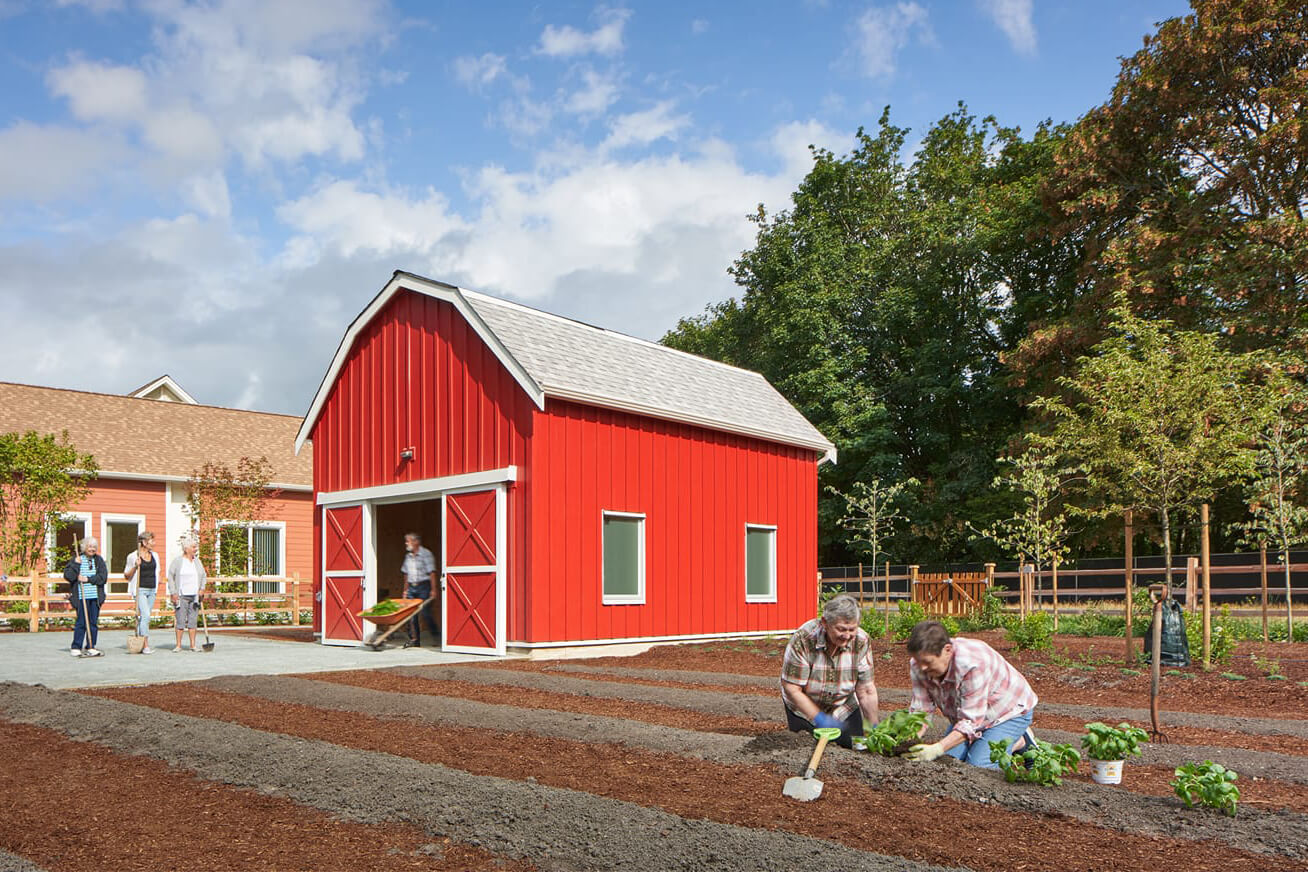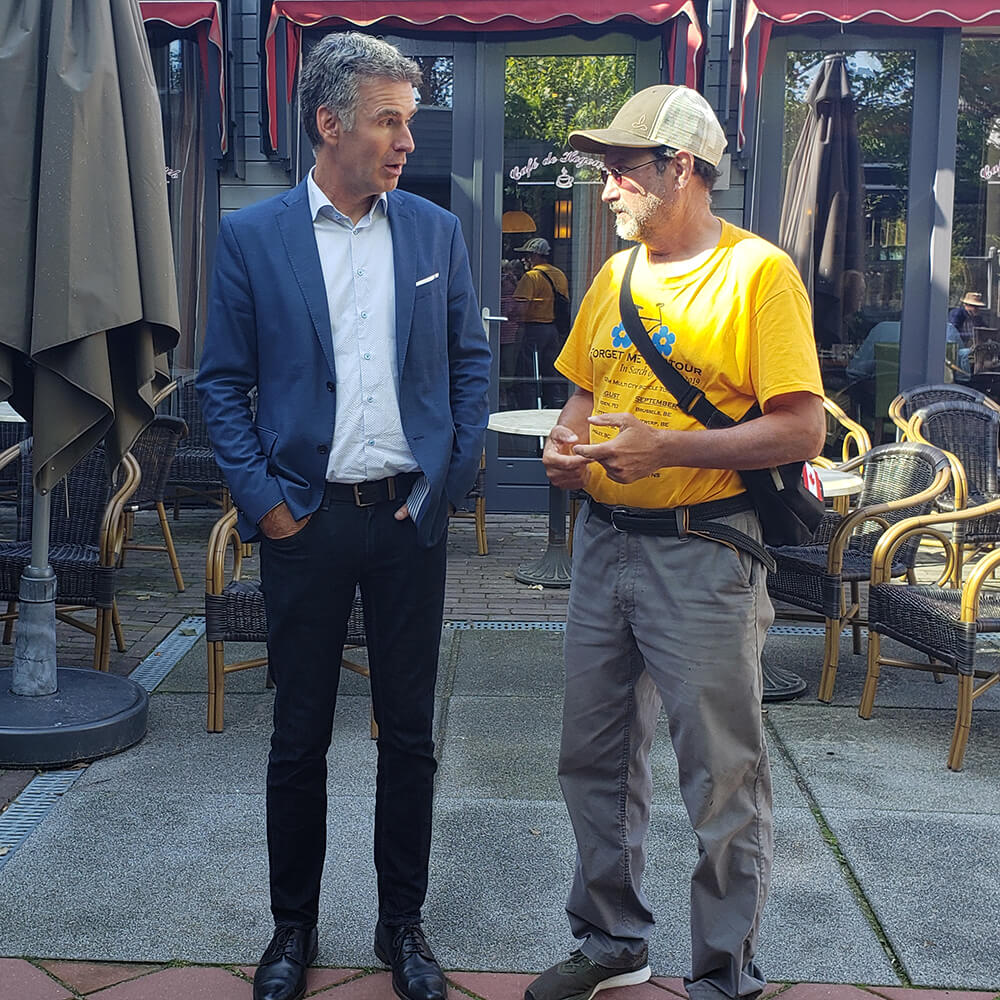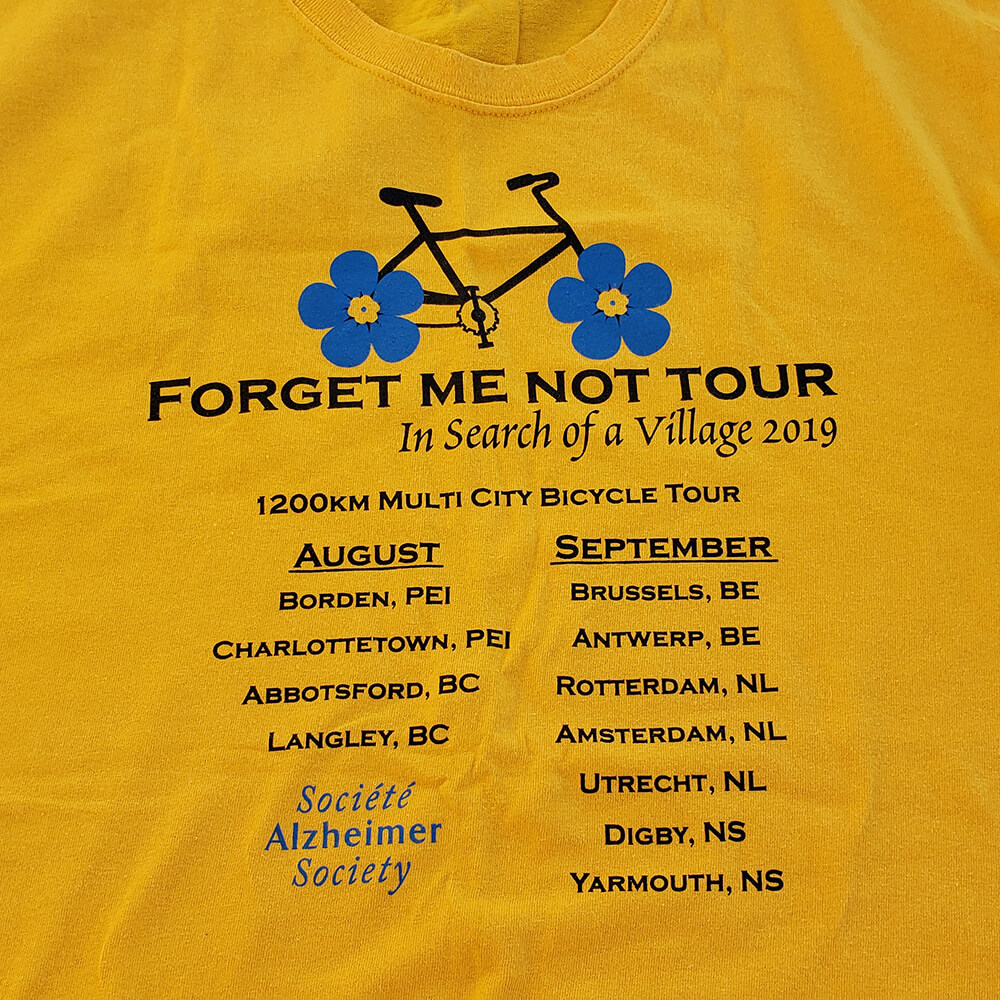November 29, 2019

Never forget nature
Gardens are integral to villages for dementia patients
BY JIM LANDRY
I’ve composed some stories based on a theme, which happens to be Myosotis sylvatica, the forget-me-not. I remember it as a child, fishing in the alder-choked brook running through my grandparent’s farm in rural New Brunswick.
I can still picture it in my mind, like blue polka dots in a sea of green, with tiny yellow eyes you have to squint to see. It appears in my garden, in fact throughout my entire yard. It’s invasive, but it’s welcome at least for now. It also appears as a logo on the bright yellow shirts I have worn almost every day, all summer and fall.
Let me explain.
Every summer for the last 10 years I do a solo bicycle ride somewhere, to raise awareness and a bit of money for a worthy charity. For the last two years I’ve been pedaling and peddling my message in New Brunswick and Prince Edward Island for the Alzheimer Society.
My mom Julia faded away three years ago after being diagnosed with the disease, and it opened a window on a whole new world for me and my family. We knew nothing about the symptoms, the care, or the toll it takes. The day Mom was diagnosed, her life changed dramatically. She was living alone in a little house up to that point, and enjoyed cooking and gardening. Her days were filled with things to do and choices to make. We took the advice of the doctors and looked to find her a nursing home. Please don’t misunderstand me, I don’t have anything critical to say about the caregivers who work in the facilities where we send our loved ones, and I hold a great deal of admiration for families who sacrifice so much to insure their loved ones maintain a high quality of life for as long as possible.
My wife Theresa volunteers at an outreach program in our neighborhood nursing home and pays weekly visits to the care facility where Mom spent her last months. I have also come to know the people who work at the Alzheimer Society. I know them to be caring, open-minded and always looking toward new advancements in preventing the disease. Equally important, they work to create a high quality of life for those who must enter our nursing homes.
Gardens at Langley Village spark conversation; quality of life has a direct connection to the soil.
So in July, I searched for an activity to help raise some awareness and maybe some donations. Theresa and I met with the executive director of the Alzheimer Society of New Brunswick and learned of a dementia village that was soon to open in Langley, B.C. It was inspired and patterned after De Hogeweyk in Weesp, near Amsterdam in the Netherlands. That was it for me. I just happened to have meetings in Abbotsford, B.C., with the Canadian Nursery Landscape Association, so I borrowed a bicycle and pushed off from there to Langley. Next, I booked a flight to Brussels, to cycle to Weesp, and added a few hundred kilometres by cycling P.E.I. and included Saint John, N.B., to Yarmouth, N.S., to attend the Communities in Bloom conference and awards. In total, I planned to travel 2,000 km and raise a bit of awareness and money in the process.
I consider myself blessed; at 60+ years old I have the health, wealth, time and my wife’s understanding attitude, that allow me to sit myself upon my bicycle and travel about. Please don’t picture me as a cyclist. I don’t match the image. My chicken-type legs have never seen the sun, nor has spandex ever contacted my skin. I look more like a hobo … on a bicycle … with a credit card. I’m slow.
Even though I enjoy cycling just for the sake of cycling, I extract even more pleasure if my travels have a purpose. A reason to go from point B to point A. My September Forget-me-not Tour provided all of that. Plus, I love visiting the lowlands, and suggest that anyone who toils in the plant profession should go there at least once.
The first stop on my journey from Brussels to Amsterdam was Zundert, in Brabant province near the Belgian border. Although I was familiar with Boskoop, known as a centre of landscape horticulture, I discovered Zundert is not far behind. The countryside is dotted with nurseries and most residents are growers; I cycled past many nurseries and greenhouse operations during my 10 days in the Netherlands. In Zundert, I watched the Kindercorso, a children’s flower parade. Hundreds of floats are built and pushed through the streets by more than a thousand children. Talk about connecting children to plants. I also learned that two weeks earlier, the Corso had taken place, the world’s biggest flower parade. It goes back to 1939, staged by a community of less than 25,000. Do yourself a favour and Google the town and the parade.
-web.jpg) De Hogewey allows meals to be cooked in the residences, pets on the property, and residents to dig in the earth and plant and harvest crops...by giving them choices.
De Hogewey allows meals to be cooked in the residences, pets on the property, and residents to dig in the earth and plant and harvest crops...by giving them choices.
I’ll cycle back to horticulture during my closing argument, but I want to explain the dementia village concept. In Langley, villagers live in houses that are settled into a residential area just south of the city, on the site of a former school. Food is prepared in the houses, and residents can go outside to tend the garden if they take the urge. There is a barn with animals (that had not yet arrived when I visited). There is a restaurant and a pub/café onsite, as well as a place for visiting families to spend a few nights. It makes for a more comfortable transition for those who need care.
Weesp’s De Hogewey is a bit different. It is very much like any Dutch town. Within the confines of the facility is a barber shop, a music venue and a large restaurant. It is very hard to distinguish what is inside the walls, from what is outside. I arrived at noon, parked my bicycle, and asked at reception if I could go inside and look around. “I’m sorry, but no.” I had anticipated this, as I was told that tours needed to be scheduled in advance. Since I was cycling, I was not sure when I might arrive, so I didn’t heed the advice. I said that I understood, for this was where people lived, not a tourist attraction. Truly, I was just happy to have made the journey. It gave me and my Forget-me-not Tour a purpose. I had struck out in search of a village, and found it.
The gentleman standing with me in reception was Eloy, facility manager and founder of the village. Serendipitously, my Mom had placed him in the room with me. He explained further why I could not come in, and I told him I understood completely, and I was not in the least upset. He then spent the next hour-and-a-half guiding me through the streets, the shops, the history and plans to take this model throughout the world. Eloy used one word to describe what they were trying to achieve: Deinstitutionalization. Think about that for a moment. Do you or anyone you know want to be in an institution? They achieve this by allowing meals to be cooked in the residences, by having pets on the property, by allowing the residents to dig in the earth and plant and harvest crops, by giving them choices on live music or the conversations they might enjoy. There are nurses and qualified caregivers present, but they just blend in with the crowd. There was laundry being done, but in the homes, in the background.
As participants in the landscape profession, we understand the satisfaction that comes with being connected to the soil, taking risks and solving problems that mitigate those risks. The longer we can keep those tools sharp, the higher quality our lives will be. Let’s continue our collective efforts to introduce future generations to nature and to plants. Show them the satisfaction that comes from being productive and hope they are provided the opportunity right through to the end.
Jim Landry is executive director of Landscape New Brunswick and Landscape P.E.I.



